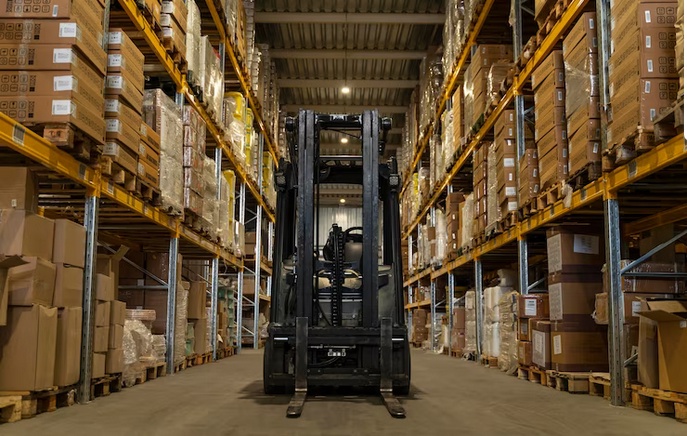Introduction
Efficient warehouse management is a crucial aspect of any successful business operation. One key element that significantly contributes to this efficiency is the warehouse racking system. A well-designed and properly implemented racking system can streamline operations, maximize storage capacity, and enhance overall productivity. In this guide, we will explore the various aspects of warehouse racking systems and provide insights into how businesses can maximize efficiency through optimal design and utilization.
Understanding Warehouse Racking Systems
Before delving into optimization strategies, it is essential to understand the basic types of warehouse racking systems. Common types include selective pallet racking, drive-in/drive-through racking, push-back racking, and pallet flow racking. Each system has its own set of advantages and is suitable for specific types of inventory and operational needs. Selecting the right type is the first step towards maximizing efficiency.
Space Utilization: Vertical Storage Solutions
One key objective of a warehouse racking system is to make the most efficient use of available space. Vertical storage solutions, such as high-density pallet racking, can significantly increase storage capacity by utilizing vertical space. This is particularly beneficial for warehouses with limited floor space. By stacking items vertically, businesses can optimize storage without expanding the physical footprint of the warehouse.
Dynamic Slotting for Improved Accessibility
Dynamic slotting is a strategy that involves regularly reassessing and reorganizing the placement of products within the warehouse. This ensures that frequently picked items are positioned in easily accessible locations, reducing travel time for workers and improving overall efficiency. Employing data analytics and inventory management systems can help businesses dynamically slot their inventory for maximum accessibility.
Automation Integration for Streamlined Operations
In the era of Industry 4.0, integrating automation into warehouse operations is becoming increasingly prevalent. Automated storage and retrieval systems (AS/RS) and robotic systems can significantly enhance efficiency by automating tasks such as picking, packing, and transportation. These technologies not only reduce the risk of errors but also optimize the utilization of warehouse space and resources.
Flexible Design for Scalability
Businesses must consider the scalability of their warehouse racking system to accommodate future growth and changes in inventory volume. Opting for a flexible racking design allows for easy adjustments to meet evolving storage needs. Adjustable pallet racking and modular shelving systems provide the adaptability required to scale up or down based on the demands of the business.
Safety Measures for Workforce Well-being
Efficiency goes hand in hand with safety in a warehouse environment. Implementing safety measures is crucial to prevent accidents and ensure the well-being of the workforce. This includes proper labeling, regular equipment maintenance, and employee training programs. By creating a safe working environment, businesses can minimize downtime caused by accidents and maintain a smooth and efficient workflow.
Implementing Technology for Real-time Visibility
Technology plays a pivotal role in optimizing warehouse operations. Implementing warehouse management systems (WMS) and radio-frequency identification (RFID) technology provides real-time visibility into inventory levels, order status, and overall warehouse performance. This data-driven approach enables businesses to make informed decisions, reduce errors, and enhance operational efficiency.
Cross-docking Strategies for Faster Throughput
Cross-docking is a strategy that involves transferring goods directly from incoming shipments to outbound transportation, minimizing the need for storage. This approach is particularly beneficial for fast-moving products with a short shelf life. By reducing the time products spend in storage, businesses can achieve faster throughput and improve overall efficiency.
Regular Maintenance and Upkeep
To ensure the longevity and optimal performance of a warehouse racking system, regular maintenance is essential. This includes inspecting racks for damage, checking the integrity of the shelving, and addressing any issues promptly. Routine maintenance not only prevents accidents but also extends the lifespan of the racking system, providing a sustainable solution for long-term efficiency.
Conclusion
In conclusion, maximizing efficiency in warehouse management requires a strategic approach to the design, implementation, and maintenance of racking systems. By selecting the appropriate type of racking, embracing vertical storage solutions, integrating automation, and prioritizing safety, businesses can create a streamlined and agile warehouse environment. The adoption of technology, such as WMS and RFID, further enhances real-time visibility and decision-making capabilities. Continuous improvement through dynamic slotting and a commitment to regular maintenance ensures that the warehouse remains adaptable and efficient in the face of changing demands. Ultimately, a well-optimized warehouse racking system is a cornerstone of operational success, enabling businesses to meet customer demands, minimize costs, and stay competitive in today's dynamic market.


No comments yet